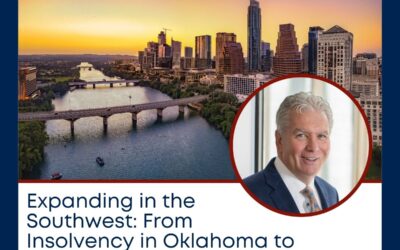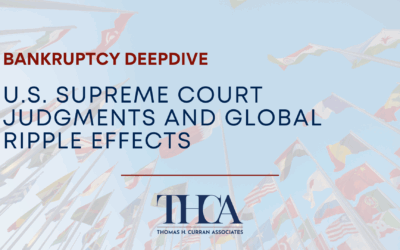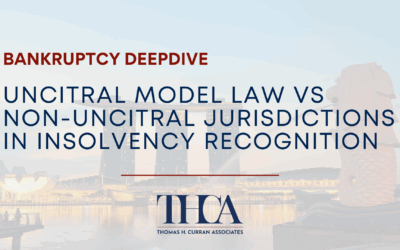Bankruptcy Recovery Attorney
Avoidance & Recovery Actions
Trustees administering bankruptcy estates have what are known as “avoidance powers” that allow them to nullify certain transactions engaged in by the debtor before filing for bankruptcy. These powers are most often exercised to the benefit of the Estate and thus its creditors.
The following are a few examples of transactions that a trustee may avoid during bankruptcy:
- Fraudulent Transfers. When a debtor has transferred property to conceal assets or defraud creditors, the trustee may avoid the transfer if it happened within certain time limitations set by Federal and State Law.
- Preferential Transfers. In some circumstances, a trustee can avoid the debtor’s transfer of property when it occurred within 90 days of the bankruptcy filing. The time period is extended to one year if the transfer is to a family member, friend, business partner, or other “insider.”.
- Unperfected Liens. When a lien that was asserted against the debtor’s property has not been perfected properly by the time of the bankruptcy filing it may be avoided. Likewise, liens that went into effect upon the bankruptcy filing or when the debtor’s financial condition deteriorated beyond a certain point may be avoided.
Bankruptcy law sets forth minimum amounts for voidable preferential transfers. Trustees are unlikely to pursue transfers that are $600 or less in aggregate when the debt is primarily consumer in nature and the case does not involve a transfer to an insider. For cases where the debt is not primarily consumer in nature, that amount rises to $6,825.
If a bankruptcy trustee seeks to avoid a transaction and recover the transferred property, he or she must commence recovery actions in the form of an adversary proceeding–the Bankruptcy Court’s version of a civil complaint. The judge will then determine whether the transfer warrants avoidance and if the property or money can be recovered from the party that received the transfer. Additionally, trustees may file recovery actions under state fraudulent transfer or similar laws where the lookback period is sometimes longer than that allowed under the United States Bankruptcy Code.
Bankruptcy trustees also have avoidance powers when a debtor tries to pay certain creditors ahead of others during the time period leading up to the bankruptcy filing. Giving preference to these creditors is contrary to the policy of equal treatment of creditors and the trustee has the power to avoid them by requiring the preferred creditors to repay the preference to the bankruptcy estate.
At Thomas H. Curran Associates our attorneys have vast experience and the practical know-how to effectively represent trustees and creditors seeking the return of assets to the bankruptcy estate through a recovery action or defending a creditor against such actions. Our attorneys will help to formulate effective and winning strategies for resolving preference and other avoidance cases in a manner that is most favorable to our clients.
Bankruptcy Practice Results
Recent successful cases handled by the attorneys from Thomas H. Curran Associates. Find more here »
Supreme Court Denies Final Appeal, Finalizing Judgement Obtained by THCA
On June 24, 2024, the Supreme Court of the United States declined the petition to review filed by Sean Dunne and his ex-wife Gayle...
Thomas H. Curran Associates Secures Appellate Victory as Massachusetts Supreme Judicial Court Denies Appellant’s Attempt to Shortcut Ordinary Appellate Review
Thomas H. Curran Associates recently obtained an appellate victory in the Massachusetts Supreme Judicial Court on May 26, 2023, in the...
Thomas H. Curran Associates win is Affirmed in Florida, U.S. District Court – Client Wins Attorneys Fees
Law: Federal Rule of Civil Procedure 37(a)(5) Case: Premier Capital, LLC v. Larry Bryan (AP) Underlying Bankruptcy Case: In re Larry Bryan...
The Second Circuit Affirms Bankruptcy Fraud Judgment Obtained by Thomas H. Curran Associates, Recognizing the Continuous Concealment Doctrine
Law: Continuous concealment doctrine, 11 USC § 727(a)(2)(A), In re Olivier, 819 F.2d 550 (5th Cir. 1987); In re Boyer, 328 F. App’x 711,...
Thomas H. Curran Associates prevails on barring discharge due to fraud by debtor
Thomas H. Curran Associates recently secured a victory on behalf of an institutional asset manager, where the Bankruptcy Court for the...
Thomas H. Curran Associates prevails on post-trial motions and obtains full security for $23 million dollar financial fraud judgment on behalf of chapter 7 bankruptcy trustee
On February 8, 2022, the United States District Court for the District of Connecticut (Meyer, J.) enter its Order denying defendant Gayle...
Supreme Court Denies Final Appeal, Finalizing Judgement Obtained by THCA
On June 24, 2024, the Supreme Court of the United States declined the petition to review filed by Sean Dunne and his ex-wife Gayle...
Thomas H. Curran Associates Secures Appellate Victory as Massachusetts Supreme Judicial Court Denies Appellant’s Attempt to Shortcut Ordinary Appellate Review
Thomas H. Curran Associates recently obtained an appellate victory in the Massachusetts Supreme Judicial Court on May 26, 2023, in the...
Thomas H. Curran Associates win is Affirmed in Florida, U.S. District Court – Client Wins Attorneys Fees
Law: Federal Rule of Civil Procedure 37(a)(5) Case: Premier Capital, LLC v. Larry Bryan (AP) Underlying Bankruptcy Case: In re Larry Bryan...
The Second Circuit Affirms Bankruptcy Fraud Judgment Obtained by Thomas H. Curran Associates, Recognizing the Continuous Concealment Doctrine
Law: Continuous concealment doctrine, 11 USC § 727(a)(2)(A), In re Olivier, 819 F.2d 550 (5th Cir. 1987); In re Boyer, 328 F. App’x 711,...
Supreme Court Denies Final Appeal, Finalizing Judgement Obtained by THCA
On June 24, 2024, the Supreme Court of the United States declined the petition to review filed by Sean Dunne and his ex-wife Gayle...
Thomas H. Curran Associates Secures Appellate Victory as Massachusetts Supreme Judicial Court Denies Appellant’s Attempt to Shortcut Ordinary Appellate Review
Thomas H. Curran Associates recently obtained an appellate victory in the Massachusetts Supreme Judicial Court on May 26, 2023, in the...
Thomas H. Curran Associates win is Affirmed in Florida, U.S. District Court – Client Wins Attorneys Fees
Law: Federal Rule of Civil Procedure 37(a)(5) Case: Premier Capital, LLC v. Larry Bryan (AP) Underlying Bankruptcy Case: In re Larry Bryan...
Bankruptcy Areas of Expertise
- Bankruptcy Litigation
- Bankruptcy Trustee Representation
- Avoidance & Recovery Actions
- Chapter 11 Trustees & Examiners
- Discharge Litigation
- Bankruptcy Fraud Investigations
- Cross Border Foreign Litigation
- 363 Bankruptcy Sales
- Bankruptcy Preference Actions
- Involuntary Bankruptcy
- Chapter 11/13 Plan Objections
Bankruptcy News
Crypto Bankruptcies and the Push for Custody Reform
The crypto sector remains under intense financial and regulatory scrutiny. The U.S. House of Representatives passed the Digital Asset...
The State of Healthcare Bankruptcy in the U.S.: Why 2025 Is a Turning Point
Jennifer Riggins sits down with Thomas Curran, Managing Partner of Thomas H. Curran Associates, to unpack the accelerating wave of...
Expanding in the Southwest: From Insolvency in Oklahoma to Asset Recovery in Texas
In this episode, Jennifer sits down with Thomas Curran, founder of Thomas H. Curran Associates, to explore the rapidly evolving world of...
U.S. Supreme Court Judgments and Global Ripple Effects
The U.S. Supreme Court has rejected Argentina’s final appeal to block an adverse ruling that allows investment funds to seize more than...
Healthcare Bankruptcies Spotlight Fraudulent Transfers
The U.S. healthcare sector is under intense financial pressure in 2025, with bankruptcies rising among private hospital groups, nursing...
UNCITRAL Model Law vs Non-UNCITRAL Jurisdictions in Insolvency Recognition
When it comes to recognizing foreign insolvency judgments, not all jurisdictions play by the same rules. Those that have enacted the...
Crypto Bankruptcies and the Push for Custody Reform
The crypto sector remains under intense financial and regulatory scrutiny. The U.S. House of Representatives passed the Digital Asset...
The State of Healthcare Bankruptcy in the U.S.: Why 2025 Is a Turning Point
Jennifer Riggins sits down with Thomas Curran, Managing Partner of Thomas H. Curran Associates, to unpack the accelerating wave of...
Expanding in the Southwest: From Insolvency in Oklahoma to Asset Recovery in Texas
In this episode, Jennifer sits down with Thomas Curran, founder of Thomas H. Curran Associates, to explore the rapidly evolving world of...
U.S. Supreme Court Judgments and Global Ripple Effects
The U.S. Supreme Court has rejected Argentina’s final appeal to block an adverse ruling that allows investment funds to seize more than...
Crypto Bankruptcies and the Push for Custody Reform
The crypto sector remains under intense financial and regulatory scrutiny. The U.S. House of Representatives passed the Digital Asset...
The State of Healthcare Bankruptcy in the U.S.: Why 2025 Is a Turning Point
Jennifer Riggins sits down with Thomas Curran, Managing Partner of Thomas H. Curran Associates, to unpack the accelerating wave of...
Expanding in the Southwest: From Insolvency in Oklahoma to Asset Recovery in Texas
In this episode, Jennifer sits down with Thomas Curran, founder of Thomas H. Curran Associates, to explore the rapidly evolving world of...
Contact Us
Are You In Need of Legal Counsel for a Bankruptcy Matter, Business Transaction, or Commercial Litigation?
Contact our team today.
Call us at (617) 207-8670 or use the quick contact form below.
Austin Office
7710 N. FM 620
Building 13-D
Austin, TX 78726
Boston Office
15 Broad Street
Suite 610
Boston, MA 02109
New York Office
305 Broadway, Suite 700
New York, NY 10007
London Office
The Leadenhall Building
Level 30
122 Leadenhall Street
London EC3V 4AB
Tags: bankruptcy recovery attorney bankruptcy avoidance bankruptcy preference actions






